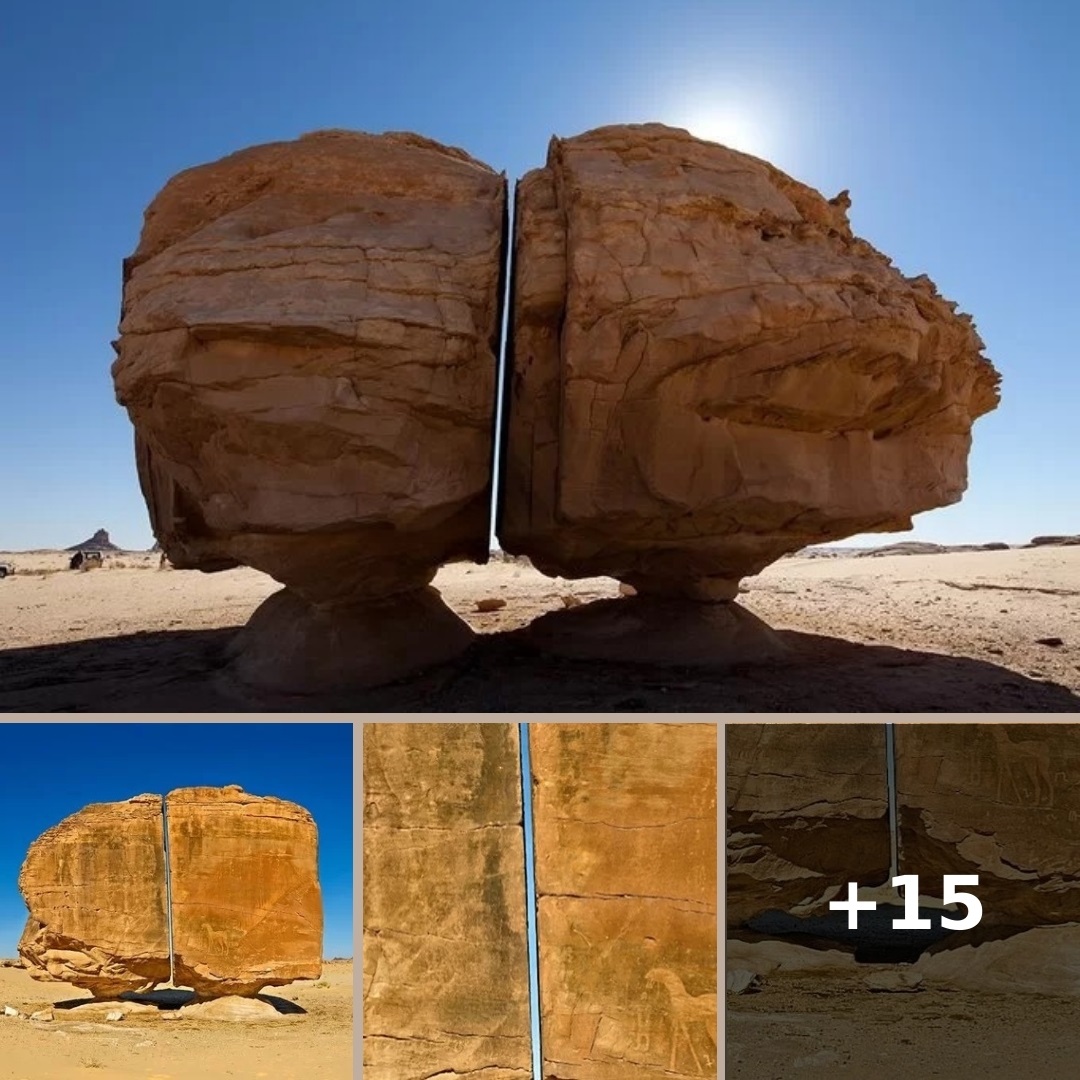There is a 4000 years old rock formation in Saudi Arabia called Al-Naslaa which appears to be cut in half with laser like precision.
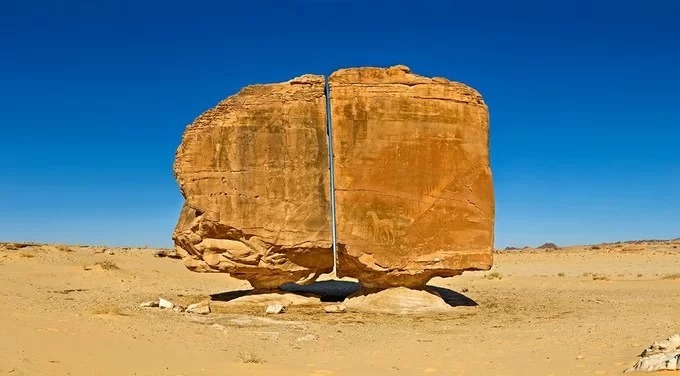
Nobody knows for sure how it happened. Some say that ancient civilizations may have been more advanced than our history books tell us.
To stay in touch & get our latest news
The world-famous Al Naslaa rock formation consists of two large sandstones on a natural bed with a small size. But what really catches the eye is the perfect separation between the two boulders, which looks like it was done with a laser beam.
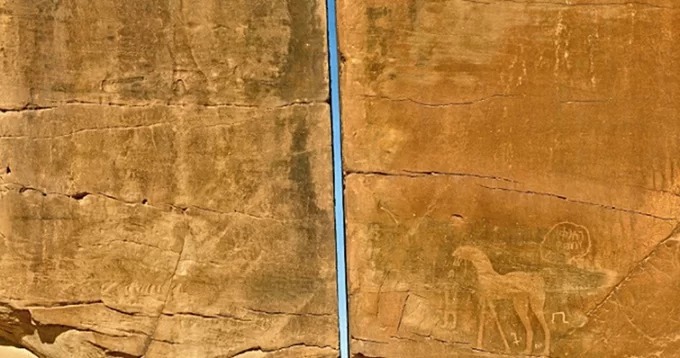
The separation of these two sandstones caused a lot of speculation on the internet, such as some saying that Al Naslaa is evidence of an ancient civilization that may have been more advanced than history has told.
Many people are amazed by the perfect separation of two sandstones, because the cracks are so precise and straight that it looks like someone cut the sandstone in half with a laser.
Al Naslaa is just one of the many stones in Tayma Oasis that have a unique appearance, but it is this near-perfect cleavage that attracts many.
According to wikipedia, Tayma /ˈtaimə/ (Arabic: تيماء) or Tema /ˈtiːmə/ Teman/Tyeman/Yeman (Habakkuk 3:3) is a large oasis with a long history of settlement, located in northwestern Saudi Arabia at the point where the trade route between Yathrib (Medina) and Dumah (al-Jawf) begins to cross the Nefud desert.
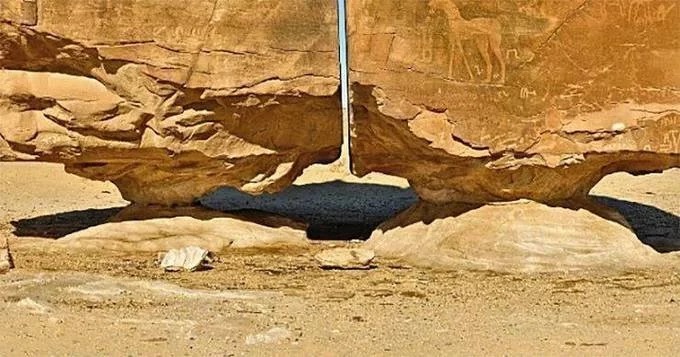
The written sources from Tayma and its surroundings are characterised by early North-West Arabian Taymanitic (Thamudic) and Aramaic texts, concentrating on the 1st millennium BC. Nevertheless, until now the historical image of Tayma was mainly shaped by foreign sources.
Assyrian texts of the 9th century BC mention Arab tribes. The place name of Tayma is mentioned in the early 8th century BC text from the Middle Euphrates before being mentioned in the context of tribute to be delivered to the assyrian king Tiglathpileser III.
Further on, Tayma is mentioned as a trading post, also in the Biblical sources. In spite of new cuneiform texts from the oasis itself and of the known sources of the Achaemenid period the type of connections between Tayma and the larger political units of the Late Babylonian and Achaemenid periods is little known.

The Al Naslaa rock formation has created confusion among geologists and historians since it was first discovered, as no one can really explain exactly how the two rocks separated so perfectly.
The two sandstones and the pedestal can be attributed to the natural elements, but the perfect vertical separation looks man-made.
Many geologists believe that the perfect split had natural causes such as tectonic movements. This theory is believed because if the Earth shifted even just a little, it would be enough to cause the rock to crack and separate in two.
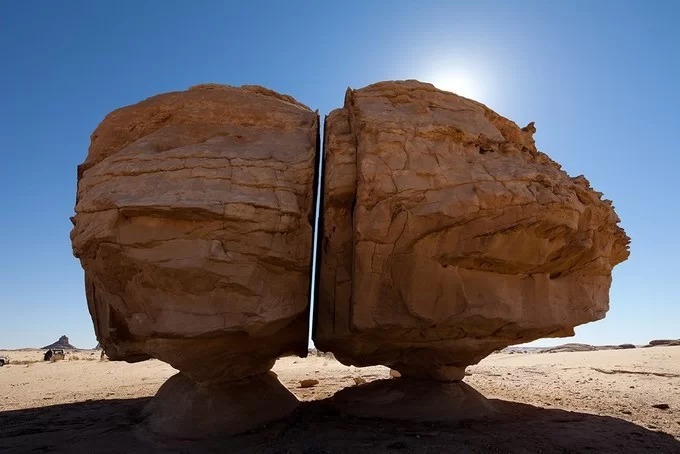
Other scientists believe that the rift is really a fault line, because the material around the fault usually tends to be weaker and more easily eroded. However, there are also those who believe that Al Naslaa was formed from volcanic embankments so that some of the weaker minerals would have hardened there before they were all excavated.
Other speculations say that Al Naslaa is the work of an advanced ancient civilization or aliens. Both theories arise because many people believe that the line occurs because the vertical split looks perfect. Indeed there is no scientific explanation for it, however, it seems that the theory is impossible.
In addition to the perfectly straight dividing line, it turns out that there are ancient rock art paintings on the surface of this strange stone. There is a painting of a horse and a human near the split part. But of course, Saudi Arabian geologists, until now have not been able to reveal the origin of the painting.
